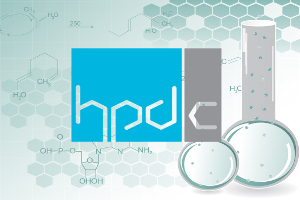How The HPD Public Repository Benefits Green Building
- < Measuring Success - What Building Product Manufacturers Do Wrong
- > Building Product Manufacturers Most Important Resources
The Health Product Declaration (HPD) Public Repository was launched in November 2016 and has become a crucial resource for architects, spec writers, interior designers, contractors, LEED consultants, and other design professionals. The Repository is a free, public resource that was created by the HPD Collaborative (HPDC), a not-for-profit member organization responsible for the HPD Open Standard’s maintenance and evolution. The database is the authoritative source for published HPDs. When a building product manufacturer publishes an HPD using the HPD Builder, it is automatically uploaded to the Repository as a PDF file. HPDs that have been created by alternate means other than the HPD Builder can also be uploaded to the Repository by the building product manufacturer. Once uploaded, an HPD is considered to be a “Public HPD.” Design professionals can search uploaded PDFs and they are available to be downloaded by users. A simple search capability is available to assist in finding HPDs by Manufacturer, Product Name, CSI Classification or HPD version.
Over the past two years it has been difficult for some project teams to locate HPDs for LEED v4 projects. Architects and designers trying to achieve the MR Credit: Building product disclosure and optimization - material ingredients - Option 1: Material Ingredients Reporting, now have a new resource for locating HPDs. HPDs have become the most popular method to achieve this LEED credit. Firms such as Perkins+Will, Smith Group JJR, and HKS utilize HPDs and encourage building product manufacturers to provide HPDs in order to be considered for product specification. For project teams, the HPD Repository is a cost-effective way of searching for information needed for product selection and specification.
In December 2014, the American Institute of Architects (AIA) board of Directors released the following Position statement, in effect through December 31, 2017: “The AIA recognizes that building materials impact the environment and human health before, during, and after their use. Knowledge of the life cycle impacts of building materials is integral to improving the craft, science, and art of architecture. The AIA encourages architects to promote transparency in materials’ contents and in their environmental and human health impacts.” Furthermore, the AIA stated that architects are encouraged to respond to the ethical imperative for materials transparency, primarily by recognizing the impact of materials; seeking knowledge about materials that may include analysis by qualified material scientists, toxicologists, and others; and advocating for transparency related to those impacts.
In addition, the HPD Repository gives building product manufacturers a tool to make their published HPDs widely available to the building industry. HPDs are becoming the most requested transparency documents for LEED v4 projects, even more than EPDs and LCAs, both of which can be cost prohibitive for many companies. Developing an HPD offers building product manufacturers a useful insight into their supply chain. Manufacturers that want to participate on a LEED v4 project need to have the proper documentation and an HPD is a small investment to make in order to be at the table. Has your company developed published HPDs on the Repository? If you are an AEC firm, what has been your experience utilizing the Repository?
For more information or to discuss the topic of this blog, please contact Brad Blank





